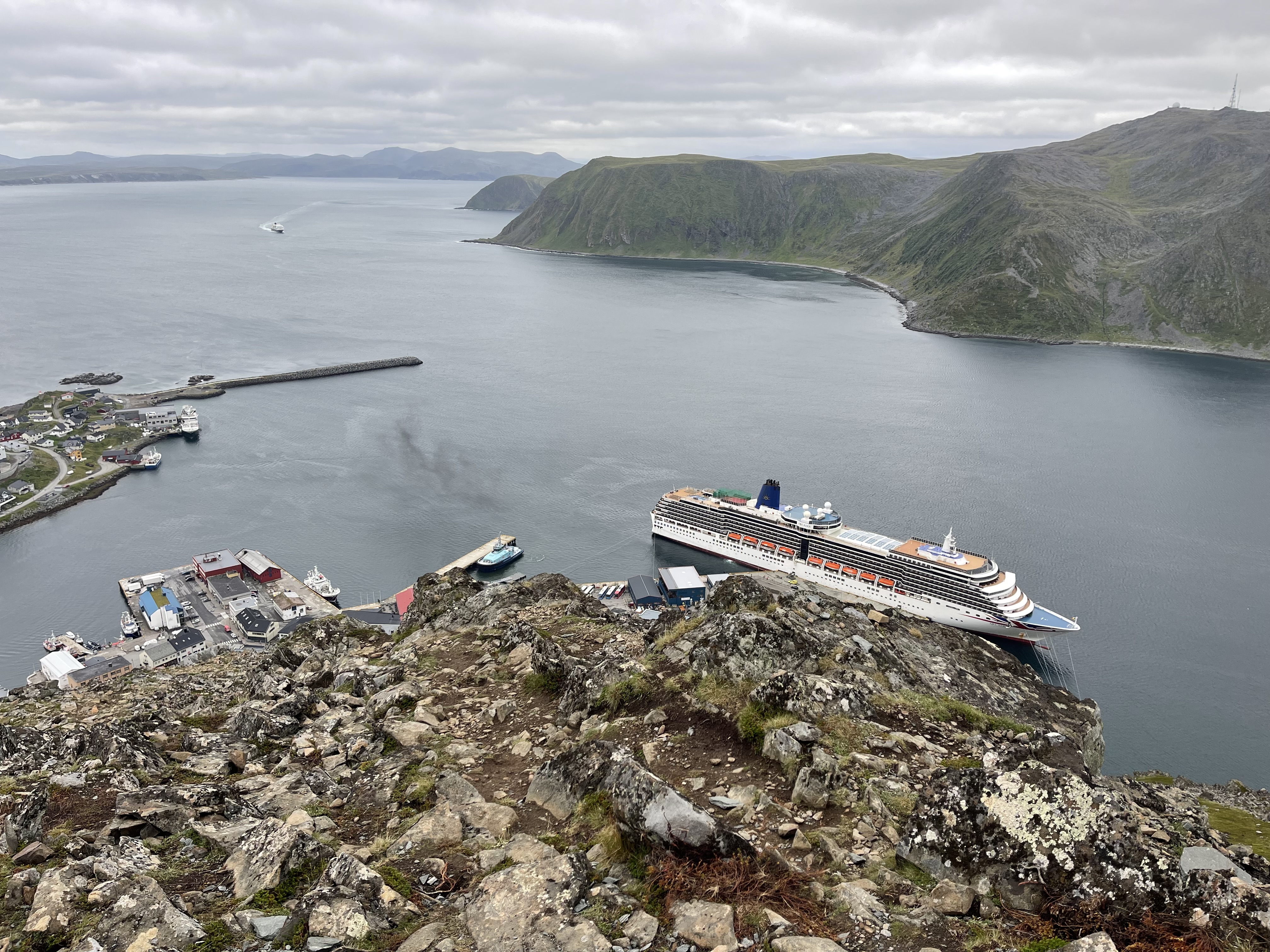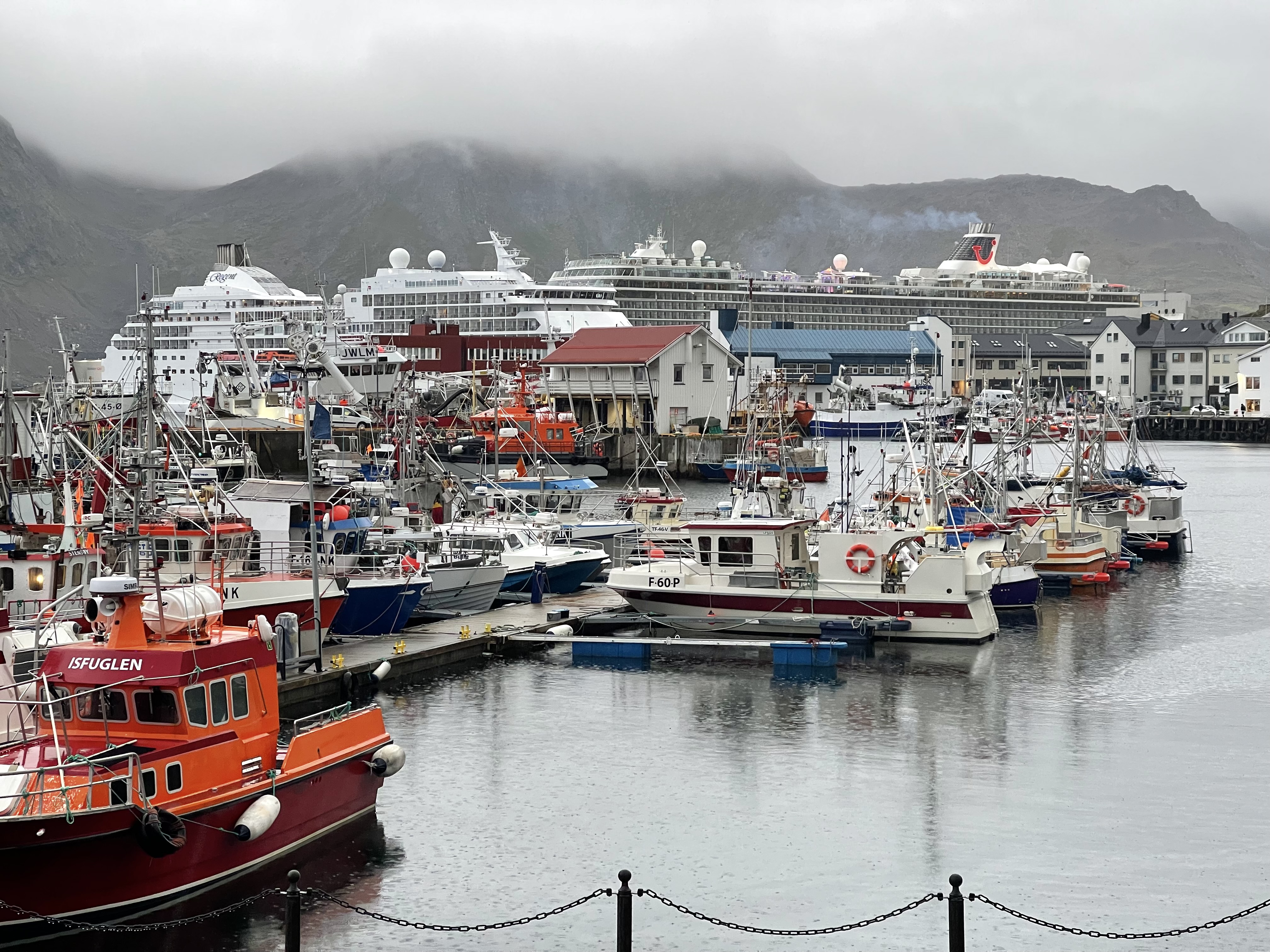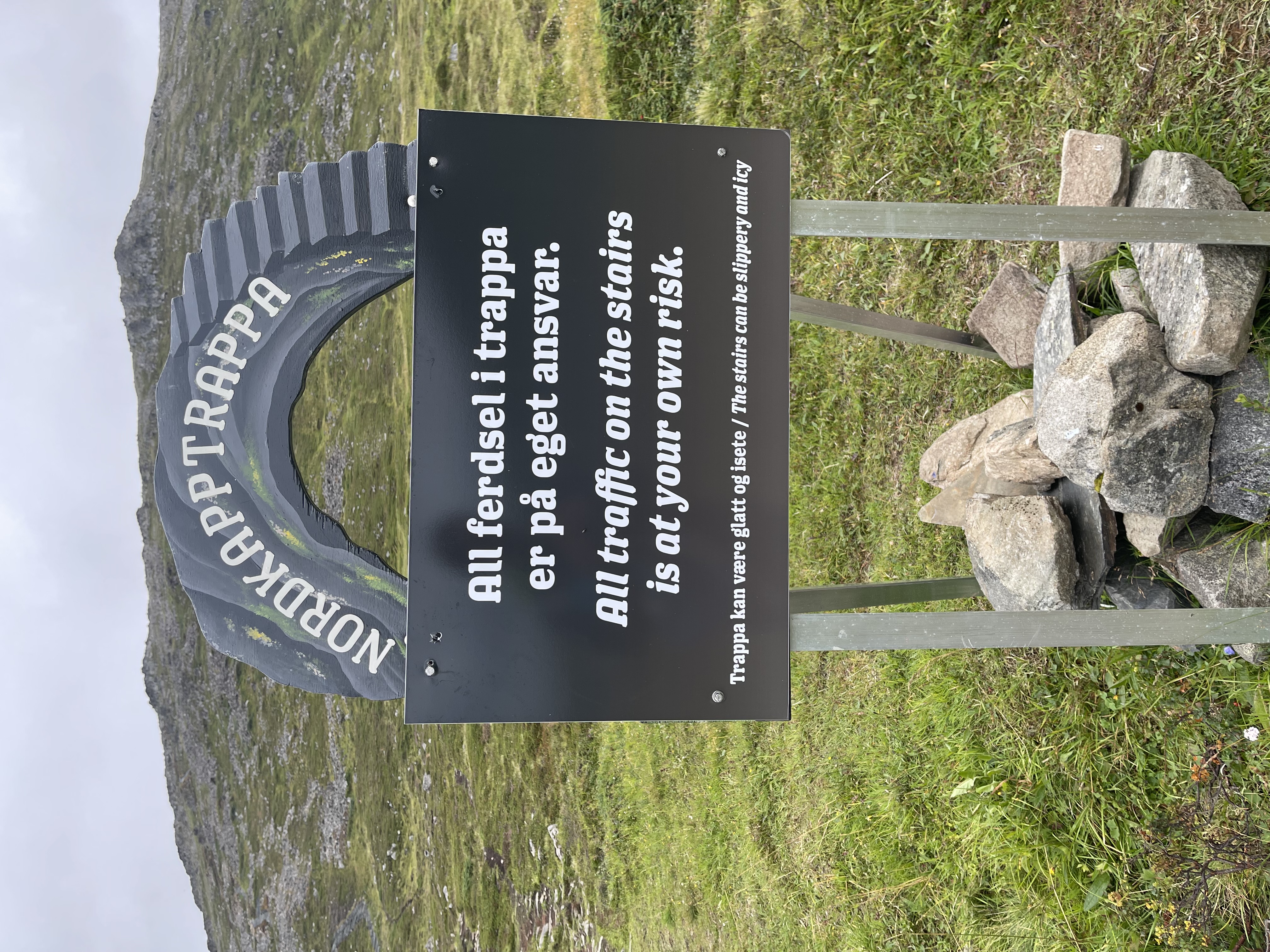Balancing cruise benefits
“We sell Norway’s nature too cheap. We have to be tougher with our prices”

Case Area
The village Honningsvåg hosts the principal port and airport of the North Cape (Nordkapp), a small municipality on the Northern Norwegian Island of Magerøya. It has the main harbour on the island, which ranks as the 10th largest in the country. Traditionally, the town’s economy consisted of year-round fishery, and reindeer herding during the summer months. The most popular attraction in the area is the North Cape plateau and its visitor’s centre, and the majority of tourist traffic directly goes there and back by bus. Longer trips may include stops at other sites, like the village of Gjesvær or Kamøyvær. Over the past 25 years, additional nature-based and culture-based experiences have been developed in Honningsvåg, including wildlife safaris and the exploration of heritage sites such as the church, the fishing village and an art gallery.
Cruise situation
The harbour in Honningsvåg plays a crucial role in connecting the local society to the rest of the world. It serves as a hub for cargo transport, fishery and the tourism industry. As the harbour is located near the town’s centre, tourists can easily visit Honningsvåg. Half of the tourism flow into the North Cape is comprised of cruise passengers, so the town profits greatly from these incoming cruises. However, while the entire municipality adapts to the presence of cruise tourism, tourists primarily visit the North Cape rather, instead of exploring Honningsvåg. The local stakeholders are well-fitted for cruise tourism, but the increasing volumes of cruise tourists may create serious challenges. These large numbers endanger the natural environment and put pressure on the town’s healthcare system and public infrastructure.
Case issues
The municipality holds responsibility for the physical infrastructure in Honningsvåg, which can still be improved. There are pedestrian paths that can still be improved, and the balance between providing for the needs of tourists versus those of local residents is challenging. Aside from this, there are bigger challenges when it comes to financial responsibility for major infrastructural investments. One potential investment is land-based electricity, which could reduce air pollution from cruise ships in the harbour. Currently however, economic sustainability is prioritized, which leads to a tendency to stick to the status quo.
The organization of stakeholders in Honningsvåg, with a few large and professional players and many smaller entrepreneurs, leads to a power imbalance in the community. As a result, profit from cruise tourism is unevenly distributed in the community. Although some micro and family-owned companies are eager to embrace rising volumes, other smaller businesses may find it difficult to cater to the specific needs and expectations of cruise passengers. Professional providers have more experience and resources to benefit from growing cruise tourismvolumes. Furthermore, the competition among providers providing similar products, services and experiences can already be observed at the destination.
Growing numbers of cruise visitors poses another potential challenge when it comes to attracting qualified labor within tourism and service industry, which became especially evident after the Covid-19 pandemic.Especially the availability of staff for small-scale tourism companies would become under serious threat if plans to extend the cruise season are actually realized.
Local solutions
Operators need to become aware of their own value and together with municipality and the local/regional Destination Marketing Organisation (DMO) to negotiate their interests and create a common strategy to influence cruise tourism development in the area.
By working together, tourism operators need to continue to work towards a balanced and inclusive tourism environment. This requires ongoing dialog, cooperation, self organization and commitment from all parties involved to secure long-term planning and management for the benefit of local community and visitors. For example, having a mentor has been a succesfull strategy for some operators in Honningsvåg that want to cater for cruise.

Conclusion and Take Away
Cruise tourism in Honningsvåg is a thriving and well-organised industry, although social sustainability and more equal distribution of economic benefits still needs to be improved. Also, allowing tourism providers to be more demanding in their vision on what sustainable business and collaboration with cruise industry preferably looks like. This means that learning and knowledge exchange within the destination is crucial in order to achieve a sustainable balance between stakeholders in the community. By working together and self-organising, the tourism industry stakeholders can aim to create a more balanced and inclusive tourism ecosystem, where the benefits are shared more equally. Through collaborative efforts and a shared vision, it is possible to create a more resilient and inclusive tourismindustry. This requires ongoing dialog, cooperation and a commitment to long-term planning and management for the benefit of both the local community and visitors.

